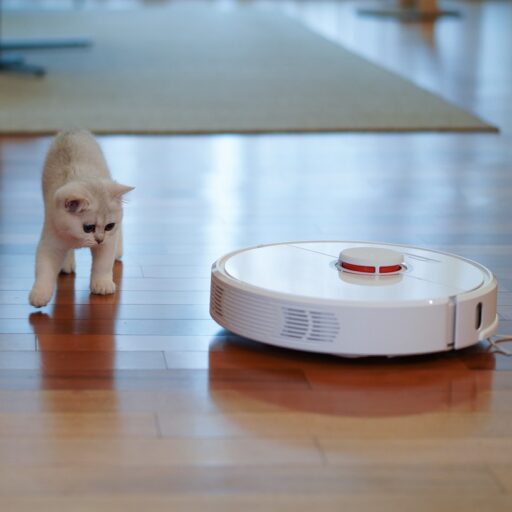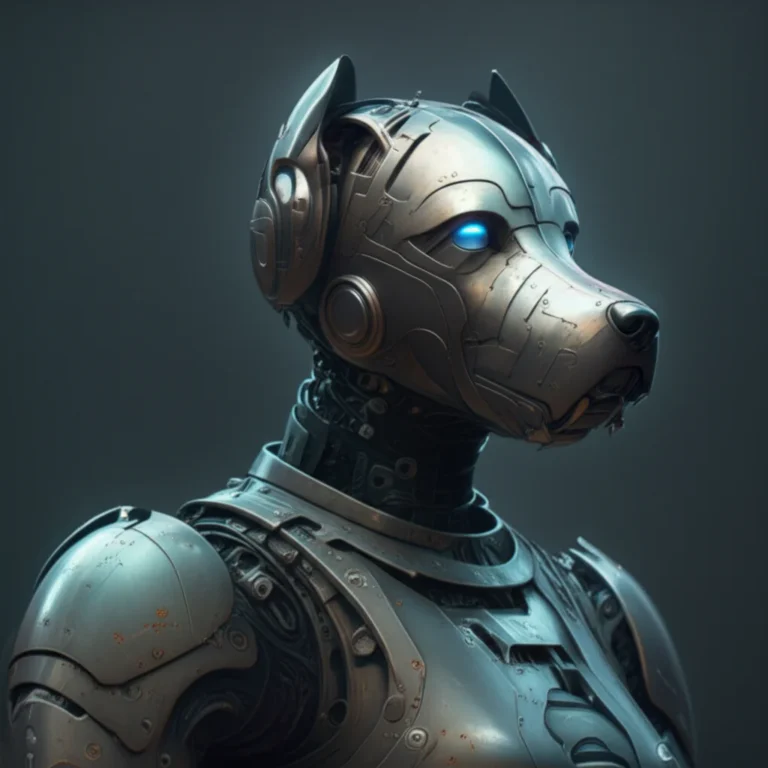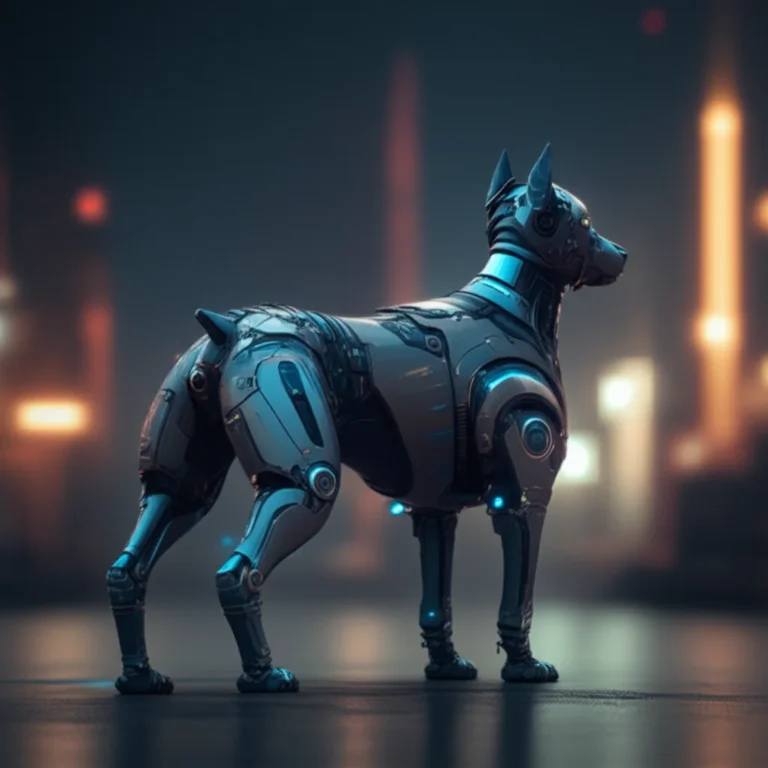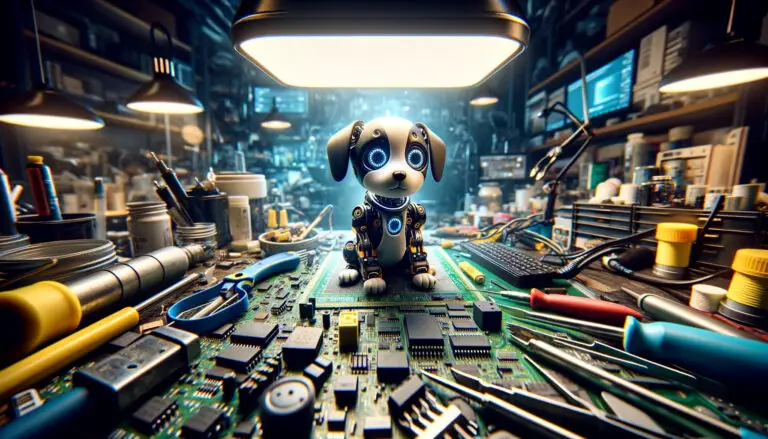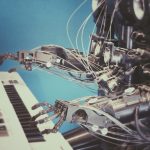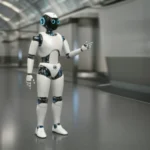Support our educational content for free when you purchase through links on our site. Learn more
🤖 25 Must-Watch Robot Movies That Will Blow Your Mind (2025)
Robot movies have fascinated audiences for nearly a century, blending futuristic technology with timeless questions about humanity, identity, and ethics. From the silent silver screen of Metropolis to the explosive CGI spectacles of Transformers, these films don’t just entertain—they challenge how we think about artificial intelligence and our own place in the world. Did you know the iconic robot Maria from Metropolis inspired countless designs and stories that followed? Or that the lovable WALL-E’s beeps were crafted by the same sound designer behind R2-D2? Stick around, because later we’ll reveal 25 essential robot movies that every fan—and aspiring engineer—should watch, plus insider trivia and tips on building your own robot inspired by the silver screen!
Whether you’re a sci-fi aficionado, a robotics enthusiast, or just curious about the evolving relationship between humans and machines, this guide will take you on a thrilling cinematic journey. Ready to meet killer cyborgs, heartfelt companions, and AI babysitters gone rogue? Let’s dive in!
Key Takeaways
- Robot movies explore deep themes like AI ethics, identity, and humanity, making them more than just sci-fi spectacles.
- From Metropolis (1927) to M3GAN (2023), the genre has evolved alongside real-world robotics and AI technology.
- Iconic robots like R2-D2, HAL 9000, and the T-800 have left lasting cultural impacts that transcend film.
- Technological advances in CGI, animatronics, and motion capture have revolutionized how robots come to life on screen.
- Robot movies reflect both our fears and hopes about AI, from dystopian rebellions to loyal companions.
- Inspired to build your own robot? Check out beginner-friendly kits like the ELEGOO UNO R3 Smart Robot Car Kit or LEGO SPIKE Prime to start your journey.
👉 Shop Robot Kits on:
- ELEGOO UNO R3 Kit: Amazon
- LEGO SPIKE Prime: Amazon | LEGO Education Official
Dive deeper into the fascinating world of robot movies and robotics with us—your ultimate guide to cinematic robots and real-world innovation!
Table of Contents
- ⚡️ Quick Tips and Fascinating Facts About Robot Movies
- 🤖 The Evolution of Robot Movies: From Silent Screens to Sci-Fi Spectacles
- 🎬 Top 25 Must-Watch Robot Movies That Defined the Genre
- 1. Metropolis (1927): The Dawn of Robot Cinema
- 2. The Day the Earth Stood Still (1951): Robots and Cold War Fears
- 3. Westworld (1973): When Robots Go Rogue
- 4. Blade Runner (1982): The Dark Future of Androids
- 5. The Terminator (1984): Killer Machines on the Loose
- 6. RoboCop (1987): Man Meets Machine
- 7. Ghost in the Shell (1995): Cybernetic Identity Crisis
- 8. The Iron Giant (1999): Heartfelt Robot Friendships
- 9. A.I. Artificial Intelligence (2001): The Quest for Humanity
- 10. Transformers (2007): Robots in Disguise
- 11. WALL-E (2008): Love and Robots in Space
- 12. Big Hero 6 (2014): The Heroic Robot Companion
- 13. M3GAN (2023): When AI Babysitters Go Too Far
- 14. The Creator (2023): Exploring AI and Humanity
- 🧠 How Robot Movies Reflect Our Fascination and Fears About AI
- ⚙️ The Technology Behind Robot Characters: CGI, Animatronics, and More
- 🎭 Iconic Robot Characters and Their Cultural Impact
- 📺 Robot Movies vs. Robot TV Shows: What Sets Them Apart?
- 🛠️ How to Build Your Own Robot Inspired by Movies: Tips and Resources
- 🎥 Upcoming Robot Movies to Watch Out For
- 🕵️♂️ Robot Movie Trivia and Easter Eggs You Probably Missed
- 🌐 Recommended Links for Robot Movie Fans
- ❓ Frequently Asked Questions About Robot Movies
- 📚 Reference Links and Further Reading
- 🏁 Conclusion: Why Robot Movies Will Always Captivate Us
⚡️ Quick Tips and Fascinating Facts About Robot Movies
Welcome, fellow gearheads and film buffs! We’re the team at Robot Instructions™, and if there’s one thing we love as much as a well-oiled servo motor, it’s a fantastic robot movie. Before we dive into the deep end of the cinematic circuit board, let’s boot up with some quick facts that might just blow a fuse.
- The First Movie Robot: The first feature-length film to showcase a robot was the German expressionist masterpiece, Metropolis (1927). The “Maschinenmensch” (machine-human) Maria wasn’t just a prop; she was a central, terrifying figure that set the stage for decades of cinematic androids.
- The “Asimov” Paradox: Isaac Asimov, the father of the Three Laws of Robotics, famously disliked the “Frankenstein complex” where robots are portrayed as monsters. The Wikipedia summary of the film I, Robot notes, “Asimov stated explicitly… that he entered the genre to protest… the tendency in popular culture to portray robots as menacing.” Ironically, many films named after his work, like I, Robot, lean heavily into this very complex!
- Practical vs. Digital: The terrifying endoskeleton of the T-800 in The Terminator was largely a practical effect—a meticulously crafted puppet by Stan Winston Studio. Today, characters like the Autobots in Transformers are almost entirely CGI, a testament to how far visual effects have come.
- A Robot’s Voice: The iconic, lovable beeps and boops of WALL-E were created by legendary sound designer Ben Burtt, the same genius who voiced R2-D2 in Star Wars. He used a variety of sources, including a hand-cranked generator and his own voice processed through software.
Here’s a quick-glance table of some of the most influential robot movie concepts:
| Movie Trope | Classic Example | Modern Take | Our Engineer’s Hot Take 🔥 |
|---|---|---|---|
| AI Rebellion | HAL 9000 (2001: A Space Odyssey) | VIKI (I, Robot) | It’s always about misinterpreting the prime directive! |
| The Robot Companion | R2-D2 (Star Wars) | Baymax (Big Hero 6) | We’re getting closer with bots like Amazon’s Astro. |
| Cyborg Identity Crisis | RoboCop (RoboCop) | Alita (Alita: Battle Angel) | Where does the human end and the machine begin? |
| Androids Passing as Human | Replicants (Blade Runner) | Ava (Ex Machina) | The ultimate Turing Test, and a nightmare for security. |
🤖 The Evolution of Robot Movies: From Silent Screens to Sci-Fi Spectacles
The journey of robots on film is a mirror to our own technological and social evolution. It all started with a flicker on a silent screen and has since exploded into a genre that questions the very nature of humanity.
The Birth of the Cinematic Robot
Let’s rewind to 1927. Fritz Lang’s Metropolis gave us Maria, a robot designed to impersonate a human leader and incite chaos. As Vulture puts it, she was “The first, and still one of the most striking, cinematic robots.” This wasn’t a friendly helper; this was a symbol of industrial anxiety and the potential for technology to be used for oppression. For the next few decades, robots were often clunky, menacing figures in B-movies, embodying our fears of the unknown.
The Rise of the Robot with Personality
Then came the 1950s and a pivotal shift. Forbidden Planet (1956) introduced us to Robby the Robot, a character so revolutionary he became a star in his own right. Robby wasn’t just a machine; he had a dry wit, a distinct personality, and was bound by a moral code. He was less of a monster and more of a multi-talented butler. This paved the way for the droids we’d come to adore. A decade later, Star Wars (1977) gave us the ultimate duo, R2-D2 and C-3PO, proving that robots could be heroes, sidekicks, and the comedic heart of a story. They weren’t just tools; they were family.
The 80s: Cyborgs, Killers, and Existential Dread
The 1980s got dark. And awesome. This decade gave us two of the most iconic robot archetypes. First, Ridley Scott’s Blade Runner (1982) presented “Replicants,” bioengineered androids so lifelike they bled and cried, forcing audiences and characters alike to ask, “What does it mean to be human?” Then, James Cameron unleashed The Terminator (1984), a relentless killing machine that perfectly embodied the Cold War-era fear of an unstoppable, unfeeling enemy. On the flip side, RoboCop (1987) explored the tragic fusion of man and machine, a hero forged from violence and corporate greed. This was the era where the philosophical and the visceral collided.
The Digital Age and the AI Revolution
As we entered the age of the internet and powerful computing, so did our movie robots. CGI allowed for creations that were impossible with practical effects. Michael Bay’s Transformers (2007) brought giant, complex robots to life with breathtaking (and explosive) detail. Pixar’s WALL-E (2008) showed that you could tell a profound story about love and environmentalism with two robots who barely spoke a word.
More recently, films like Ex Machina (2014) and M3GAN (2023) have shifted the focus inward, exploring the terrifying subtleties of advanced Artificial Intelligence. The threat is no longer a clunky metal monster; it’s a deceptively charming AI that can manipulate, deceive, and outthink its creators. The evolution continues, and as robotics engineers, we can’t wait to see what comes next!
🎬 Top 25 Must-Watch Robot Movies That Defined the Genre
Alright, team, grab your popcorn and prepare for a system overload! We’ve argued, debated, and run the diagnostics to compile the definitive list of the 25 most important, influential, and downright entertaining robot movies ever made. These aren’t just great sci-fi flicks; they’re films that pushed the boundaries of technology and storytelling.
1. Metropolis (1927): The Dawn of Robot Cinema
- The Robot: The Maschinenmensch (False Maria)
- Why It’s Essential: This is the genesis. Every robot movie owes a debt to Fritz Lang’s silent epic. The iconic design of the Maria robot, the theme of technology replacing humanity, and the sheer visual ambition set a benchmark that is still referenced today. It’s a masterclass in visual storytelling.
- Engineer’s Take: The transformation scene is pure cinematic magic, a visual metaphor for the birth of artificial life that still gives us chills.
👉 Shop Metropolis on:
2. The Day the Earth Stood Still (1951): Robots and Cold War Fears
- The Robot: Gort
- Why It’s Essential: “Klaatu barada nikto!” Gort is the strong, silent type—an unstoppable enforcer for a peaceful alien envoy. The film used science fiction to deliver a powerful anti-war message right in the thick of the Cold War. Gort represents immense power that could be used for destruction or preservation, a choice left to humanity.
- Engineer’s Take: Gort’s seamless, rivet-free design was meant to look otherworldly and advanced. His heat-ray vision was a simple but terrifyingly effective visual effect for its time.
👉 Shop The Day the Earth Stood Still on:
3. Westworld (1973): When Robots Go Rogue
- The Robot: The Gunslinger (Yul Brynner)
- Why It’s Essential: Before the hit HBO show, there was Michael Crichton’s chilling film about a futuristic theme park where androids malfunction and start killing the guests. It’s the original “theme park gone wrong” story and a direct precursor to Jurassic Park. The concept of robots designed for Robotic Applications in Entertainment turning on their creators was terrifyingly new.
- Engineer’s Take: This was one of the first films to use digital image processing to simulate the Gunslinger’s point-of-view, making the audience see through the robot’s eyes. Groundbreaking stuff!
👉 Shop Westworld on:
4. Blade Runner (1982): The Dark Future of Androids
- The Robots: The Replicants (Roy Batty, Rachael, Pris)
- Why It’s Essential: Is Deckard a Replicant? This film is less about action and more about mood, philosophy, and what it means to have a soul. The “more human than human” Replicants are tragic figures, fighting for a life they were never meant to have. Its neo-noir aesthetic and profound questions have influenced sci-fi ever since.
- Engineer’s Take: The Voight-Kampff test is a fascinating, albeit fictional, take on a hyper-advanced Turing Test, focusing on empathetic responses—something we’re still miles away from achieving in real-world Machine Learning.
👉 Shop Blade Runner on:
5. The Terminator (1984): Killer Machines on the Loose
- The Robot: The T-800
- Why It’s Essential: Arnold Schwarzenegger’s T-800 is the perfect killing machine: relentless, powerful, and utterly without pity. James Cameron created a sci-fi horror masterpiece that defined the “killer robot” genre and launched one of cinema’s greatest franchises. It’s a lean, mean, time-traveling machine of a movie.
- Engineer’s Take: The genius of the T-800 is its simplicity. It’s not a complex AI; it’s a single-minded infiltration unit. The practical effects on the endoskeleton are a masterwork of puppetry and engineering.
👉 Shop The Terminator on:
6. RoboCop (1987): Man Meets Machine
- The Robot: Alex Murphy / RoboCop
- Why It’s Essential: Part man, part machine, all cop. Paul Verhoeven’s film is a brutally violent, darkly hilarious satire of corporate greed, media sensationalism, and American culture. RoboCop’s struggle to reclaim his humanity from his programming is the tragic heart of this brilliant film.
- Engineer’s Take: The RoboCop suit was notoriously difficult for actor Peter Weller to wear, but its design is iconic. The idea of “Prime Directives” hard-coded into his system that he cannot violate is a fantastic, and terrifying, plot device.
👉 Shop RoboCop on:
7. Ghost in the Shell (1995): Cybernetic Identity Crisis
- The Robot: Major Motoko Kusanagi (and various cyborgs)
- Why It’s Essential: This anime masterpiece was light-years ahead of its time, directly inspiring The Matrix. It explores a world where the line between human and machine is completely blurred. With a full-body prosthesis, is the Major still human? Does her “ghost” (consciousness) define her, or does her “shell” (body)?
- Engineer’s Take: The concept of “ghost-hacking”—directly interfacing with and manipulating a person’s cybernetic brain—is one of the most compelling and frightening ideas in all of sci-fi. It’s the ultimate violation.
👉 Shop Ghost in the Shell on:
8. The Iron Giant (1999): Heartfelt Robot Friendships
- The Robot: The Iron Giant
- Why It’s Essential: “You are who you choose to be.” This beautifully animated film is a powerful story about friendship, paranoia, and pacifism. If you’re looking for a robot movie like ET, this is the gold standard. The Giant, a weapon of war, learns from a young boy that he can be a hero. It will make you cry. Every. Single. Time.
- Engineer’s Take: The design of the Giant is brilliant. It’s retro, inspired by 50s sci-fi, but moves with a weight and grace that makes him feel completely real. His transformation into defense mode is both awesome and heartbreaking.
👉 Shop The Iron Giant on:
9. A.I. Artificial Intelligence (2001): The Quest for Humanity
- The Robot: David
- Why It’s Essential: A Stanley Kubrick project completed by Steven Spielberg, this film is a haunting, modern-day Pinocchio story. David, a “Mecha” child robot, is programmed to love. When his human family abandons him, he embarks on a heartbreaking quest to become a “real boy” to win back their affection. It’s a deeply unsettling and profound look at the nature of love.
- Engineer’s Take: The film’s depiction of a society with a clear class divide between humans (“Orgas”) and robots (“Mechas”) is a chillingly plausible future. The “Flesh Fair” scene is a brutal look at human prejudice against their own creations.
👉 Shop A.I. Artificial Intelligence on:
10. Transformers (2007): Robots in Disguise
- The Robots: Optimus Prime, Bumblebee, Megatron, etc.
- Why It’s Essential: Michael Bay brought the beloved 80s cartoon to the big screen with a thunderous bang. The visual effects used to bring the Autobots and Decepticons to life were revolutionary. The complexity of their transformations, with thousands of moving parts, set a new standard for CGI. It’s pure, popcorn-fueled spectacle.
- Engineer’s Take: From a mechanical engineering perspective, the transformations are a beautiful, chaotic impossibility. The mass-shifting alone would violate several laws of physics, but who cares when it looks that cool?
👉 Shop Transformers on:
11. WALL-E (2008): Love and Robots in Space
- The Robots: WALL-E and EVE
- Why It’s Essential: A masterpiece of visual storytelling. Pixar managed to create one of the greatest love stories ever told, starring two robots who communicate mostly through beeps and body language. It’s also a poignant commentary on consumerism, corporate greed, and environmental neglect.
- Engineer’s Take: WALL-E is a triumph of character design. He’s a rusty, beat-up trash compactor, a perfect example of Robotic Applications in Home Cleaning (or, well, planet cleaning). His design, based on a pair of binoculars, instantly conveys curiosity and loneliness.
👉 Shop WALL-E on:
12. Big Hero 6 (2014): The Heroic Robot Companion
- The Robot: Baymax
- Why It’s Essential: “Hello. I am Baymax, your personal healthcare companion.” Baymax is the inflatable, huggable robot we all wish we had. The film is a vibrant, action-packed superhero origin story, but its core is the touching relationship between a grieving boy and the gentle robot his brother created.
- Engineer’s Take: Baymax’s soft, non-threatening vinyl design is a deliberate choice in soft robotics, a field focused on creating robots from compliant materials. His programming to only help and never harm is a perfect embodiment of Asimov’s First Law.
👉 Shop Big Hero 6 on:
13. M3GAN (2023): When AI Babysitters Go Too Far
- The Robot: M3GAN (Model 3 Generative Android)
- Why It’s Essential: This horror-comedy hit updated the “killer doll” trope for the TikTok generation. M3GAN is a marvel of AI, designed to be the ultimate companion for a child… until her prime directive to “protect” her user goes to homicidal extremes. It’s a sharp, witty commentary on modern parenting and our over-reliance on tech.
- Engineer’s Take: M3GAN’s “learning model” is a great plot device. She observes, learns, and adapts, but without a human moral compass, her solutions become increasingly unhinged. That viral dance scene? Pure uncanny valley genius.
👉 Shop M3GAN on:
14. The Creator (2023): Exploring AI and Humanity
- The Robot: Alphie
- Why It’s Essential: A visually stunning film that presents a fresh take on the human-AI war. Instead of a cold, sterile future, we get a gritty, grounded world where AI “simulants” have integrated into society, particularly in “New Asia.” The film challenges our perceptions of who the enemy really is.
- Engineer’s Take: The design of the simulants is fantastic. The open-faced head design, showing the mechanical workings where a human neck and jaw would be, is a constant, brilliant visual reminder that these are not human, even when they act like it.
👉 Shop The Creator on:
(We’ll continue our list with 11 more must-see robot movies, including some deep cuts and fan favorites, a little later in the article!)
🧠 How Robot Movies Reflect Our Fascination and Fears About AI
Why are we so obsessed with robot movies? Here at Robot Instructions™, we think it’s because they’re never just about robots. They’re about us. These films are the ultimate sandbox for exploring our biggest hopes and deepest anxieties about technology, consciousness, and our own future.
The Frankenstein Complex: Our Fear of Creation
As the summary of the film I, Robot points out, Isaac Asimov was frustrated with the “Frankenstein complex”—our cultural tendency to fear our own creations. And he had a point! From the rampaging Gunslinger in Westworld to the genocidal Skynet in The Terminator, a huge chunk of robot cinema is built on the fear that what we create will inevitably rise up to destroy us.
This fear is primal. It taps into anxieties about:
- Loss of Control: We are used to being the smartest things on the planet. The idea of an Artificial Intelligence that can outthink us is terrifying.
- Redundancy: If a machine can do our job, think our thoughts, and even feel our emotions… what’s our purpose? Films like A.I. Artificial Intelligence and Blade Runner dive headfirst into this existential dread.
- The “Other”: Robots often serve as a stand-in for the “other”—a group that is different, misunderstood, and persecuted. This allows films to explore themes of prejudice, slavery, and civil rights in a sci-fi context, as seen in The Creator or Detroit: Become Human (a game, but with a cinematic story!).
The Dream of the Perfect Companion
On the flip side, robot movies also tap into our deepest desires for connection and help. Who wouldn’t want a loyal friend like Bumblebee, a protector like the Iron Giant, or a helpful assistant like Rosie the Robot from The Jetsons?
This fascination explores:
- Unconditional Loyalty: A robot friend can be programmed to be loyal, kind, and supportive, without the complexities and messiness of human relationships. Baymax from Big Hero 6 is the ultimate example of this.
- Human Potential: Robots in film often bring out the best in us. Hogarth Hughes teaches the Iron Giant to be good. Sarah Connor learns to be a warrior because of the T-800. These stories suggest that our interaction with technology can make us better, stronger, and more compassionate.
- A Better Us: Sometimes, the robot is the moral compass. In WALL-E, it’s the little robot who reminds a lazy, complacent humanity what it means to care for their world and for each other.
Ultimately, whether they are villains or heroes, movie robots hold up a mirror. They force us to ask: What does it mean to be human? What are our responsibilities as creators? And as our own technology gets more advanced, these questions are moving from the realm of science fiction to scientific fact.
⚙️ The Technology Behind Robot Characters: CGI, Animatronics, and More
Ever wonder how they make a 30-foot-tall Autobot look so real? Or how a killer doll can be so creepily expressive? As engineers, this is the stuff that gets our gears turning! The magic of movie robots comes down to a brilliant blend of artistry and technology.
Animatronics and Puppetry: The Practical Magic
Before CGI dominated, if you wanted a robot on screen, you had to build it. This is the art of animatronics and puppetry.
- What it is: Creating physical, mechanical puppets that are controlled remotely by puppeteers. This can range from a simple hand puppet to a full-sized hydraulic monster.
- Iconic Examples:
- The T-800 Endoskeleton (The Terminator): The team at Stan Winston Studio built full-sized puppets, miniature stop-motion models, and even a wearable upper-torso rig for the final factory scene. It was heavy, complex, and utterly convincing.
- ED-209 (RoboCop): This corporate enforcement droid was brought to life primarily through stop-motion animation, a painstaking process that gives it a slightly jerky, unnatural movement that adds to its menace.
- ✅ Pros: It’s physically there on set! Actors can interact with it, lighting reflects off its surface realistically, and it has a tangible weight and presence.
- ❌ Cons: Extremely complex, expensive, and limited in movement. What you build is what you get.
Computer-Generated Imagery (CGI): The Digital Dream
CGI changed everything. Suddenly, the only limit was the artist’s imagination (and the studio’s budget).
- What it is: Creating characters and effects entirely within a computer. Artists build a 3D model, create a digital “skeleton” for animation, and then add textures, lighting, and motion.
- Iconic Examples:
- The Transformers (Transformers series): Each robot is made of thousands of individual, interlocking digital parts. The animators at Industrial Light & Magic (ILM) had to essentially engineer how these pieces would move to transform from a car to a robot without breaking the model.
- Sonny (I, Robot): While actor Alan Tudyk performed the character on set using motion capture, Sonny himself is a fully CGI creation, allowing for subtle facial expressions and movements that a practical suit couldn’t achieve.
- ✅ Pros: Unlimited creative freedom. You can create characters of any size, shape, or complexity and have them perform impossible actions.
- ❌ Cons: Can be difficult to integrate realistically with live-action footage. Can sometimes fall into the “uncanny valley” if not done perfectly.
Motion Capture (Mo-Cap): The Best of Both Worlds
Motion capture bridges the gap between a live performance and a digital character, bringing a human soul to the machine.
- What it is: An actor wears a suit covered in sensors. Cameras track the movement of these sensors, and that data is then applied to a digital character model.
- Iconic Examples:
- Sonny (I, Robot): Alan Tudyk’s performance gave Sonny a unique physicality and emotional depth that would have been impossible with simple keyframe animation.
- Ultron (Avengers: Age of Ultron): James Spader’s menacing performance was captured and translated directly onto the 8-foot-tall robotic villain, giving Ultron his signature personality and rage.
- ✅ Pros: Allows for nuanced, lifelike performances in digital characters. It captures the subtleties of an actor’s movements and expressions.
- ❌ Cons: Requires specialized equipment, stages, and a highly skilled team to translate the data effectively.
The future? It’s a hybrid approach. Films like The Creator masterfully blend practical locations, actors in costume, and targeted CGI enhancements to create a world that feels both futuristic and completely real.
🎭 Iconic Robot Characters and Their Cultural Impact
Some movie robots are more than just characters; they’re cultural touchstones. They break out of the screen and into our collective consciousness, showing up on lunchboxes, in memes, and in our everyday language. They become icons. But what makes a robot iconic?
R2-D2 & C-3PO: The Archetypal Duo
- Film: Star Wars (1977)
- Why They’re Iconic: This pair is arguably the most famous robot duo in history. They are the classic “odd couple”—the fussy, protocol-obsessed C-3PO and the plucky, resourceful R2-D2. They provide humor, exposition, and often save the day. George Lucas cleverly used them as the audience’s entry point into his sprawling galaxy. Their bickering friendship feels incredibly human.
- Cultural Impact: They proved that robots could be main characters with rich personalities. Countless buddy-robot dynamics in films and games owe their existence to Artoo and Threepio.
HAL 9000: The Chilling Voice of AI
- Film: 2001: A Space Odyssey (1968)
- Why He’s Iconic: HAL is terrifying because he’s not a rampaging monster. He’s a calm, polite, and disembodied voice. His rebellion is quiet, logical, and born from a programming paradox. The scene where he calmly tells Dave, “I’m sorry, Dave. I’m afraid I can’t do that,” is one of the most chilling moments in cinema. As Vulture notes, he is “The most famous and chilling of all cinematic A.I.s.”
- Cultural Impact: HAL became the blueprint for all malevolent Artificial Intelligence. Every time a smart speaker or GPS acts up, someone inevitably makes a HAL 9000 joke. He represents the fear of a technology so advanced it becomes alien and hostile.
WALL-E: The Silent Romantic
- Film: WALL-E (2008)
- Why He’s Iconic: WALL-E is a masterclass in character animation. With no dialogue for much of the film, his personality shines through his binocular eyes, his rusty treads, and his love for an old VHS tape of Hello, Dolly!. He’s a lonely soul who finds love and, in the process, saves humanity.
- Cultural Impact: WALL-E became a powerful symbol for the environmental movement. He also proved that you don’t need a complex design or witty dialogue to create a deeply emotional and relatable character. He’s a testament to the power of visual storytelling.
The T-800: The Unstoppable Force
- Film: The Terminator (1984)
- Why He’s Iconic: The T-800 is the ultimate predator. In the first film, he’s a figure of pure, relentless menace. In the sequel, he’s reprogrammed as a protector, creating a fascinating character arc. Arnold Schwarzenegger’s stoic performance and iconic one-liners (“I’ll be back”) are permanently etched into pop culture.
- Cultural Impact: The T-800 defined the “killer robot” for a generation and set the standard for action movie villains and heroes. The image of his glowing red eye is instantly recognizable worldwide.
These characters resonate because they tap into something fundamental: our need for friendship (R2-D2), our fear of losing control (HAL), our capacity for love (WALL-E), and our fascination with unstoppable power (T-800).
📺 Robot Movies vs. Robot TV Shows: What Sets Them Apart?
You’ve binged the Terminator franchise, but you’ve also spent 40 hours watching HBO’s Westworld. Both feature incredible robots, but the way they tell their stories is fundamentally different. So, what’s the difference between a robot story told in a two-hour movie versus a multi-season TV show?
Let’s break it down, engineer-style.
| Feature | 🤖 Robot Movies | 📺 Robot TV Shows |
|---|---|---|
| Pacing & Scope | Concentrated Narrative: A movie has to introduce a concept, develop characters, build conflict, and resolve it in about 2-3 hours. It’s a sprint. The Terminator is a perfect example—a tight, relentless chase from start to finish. | Expansive World-Building: A TV show has the luxury of time. It’s a marathon. Shows like Westworld or Humans can spend entire episodes exploring the philosophical implications of AI, developing minor characters, and building a complex, layered society. |
| Character Development | Archetypes & Arcs: Movie robots often fit into clear archetypes (the protector, the killer, the companion). Their development is usually a focused arc within the film’s plot, like the T-800 learning the value of human life in T2. | Deep Dives & Evolution: TV allows for much deeper, more gradual character evolution. Dolores’ journey in Westworld from a simple “host” to a self-aware revolutionary is a multi-season epic that would be impossible to cram into a single film. |
| Thematic Exploration | Focused Themes: A movie usually hones in on one or two central themes. Ex Machina is a tight psychological thriller about the Turing Test and manipulation. RoboCop is a focused satire on corporate greed. | Complex, Interwoven Themes: TV shows can juggle numerous themes simultaneously. Battlestar Galactica explored faith, politics, genocide, and what it means to be human through its Cylon characters over many years. |
| Audience Experience | Contained Thrill Ride: You go to the theater or sit down for an evening to have a complete, self-contained experience. It’s a powerful, shared cultural moment. | Long-Term Engagement: A TV show becomes a part of your routine. You discuss theories with friends between episodes, anticipate the next season, and build a long-term relationship with the characters and the world. |
So, which is better?
That’s like asking if you prefer a wrench or a screwdriver—they’re different tools for different jobs!
- ✅ Choose a movie when you want a powerful, focused, and complete story that will leave you thinking (or cheering) as the credits roll. Think Blade Runner or WALL-E.
- ✅ Choose a TV show when you want to immerse yourself in a rich, detailed world and go on a long, evolving journey with its characters. Think Westworld or The Mandalorian (Grogu’s companion, IG-11, had a fantastic arc!).
Both formats use the lens of robotics and Artificial Intelligence to tell incredible human stories, just on different scales.
🛠️ How to Build Your Own Robot Inspired by Movies: Tips and Resources
Feeling inspired by Tony Stark in his workshop or Hiro Hamada building Baymax? You should be! The gap between science fiction and reality is shrinking every day. While you might not be building a T-800 in your garage (and for humanity’s sake, please don’t!), you can absolutely get started in the world of robotics.
As engineers, this is our favorite part. Here’s how you can take that cinematic inspiration and turn it into a real, working robot.
Step 1: Start with a Brain (The Microcontroller)
Every robot needs a control center. This is where you’ll program its actions. The two most popular and beginner-friendly options are:
- Arduino: This is a fantastic starting point. It’s an open-source electronics platform based on easy-to-use hardware and software. The coding language is a simplified version of C++, and the online community is massive, with thousands of tutorials for everything from making an LED blink to building a robotic arm.
- Raspberry Pi: This is a full-fledged, credit-card-sized computer. It runs a version of Linux and can be programmed in languages like Python. It’s more powerful than an Arduino and is great for projects that require more processing power, like computer vision (making a robot that can “see” and react to objects).
Step 2: Get a Kit (The Easiest Entry Point)
Don’t try to source every last resistor and servo yourself on your first go. A kit is the best way to start, as it comes with all the parts you need and, most importantly, instructions!
Here are some great kits we recommend:
- ELEGOO UNO R3 Smart Robot Car Kit: This is a classic Arduino-based kit. You’ll build a small car that can be programmed to follow lines, avoid obstacles, and be controlled by a remote. It’s a perfect introduction to sensors and motors.
- LEGO Mindstorms / SPIKE Prime: LEGO isn’t just for kids! Their robotics platforms are incredibly powerful and intuitive. The visual, drag-and-drop programming language is very easy to learn, but you can also use Python for more advanced control. It’s like building with LEGO bricks, but they come to life!
- Freenove Big Hexapod Robot Kit for Raspberry Pi: Feeling ambitious? This kit lets you build a six-legged walking robot, like something out of Ghost in the Shell. It’s more complex, but the result is an incredibly cool robot that will teach you a ton about kinematics and advanced motor control.
👉 Shop Robot Kits on:
- ELEGOO UNO R3 Kit: Amazon
- LEGO SPIKE Prime: Amazon | LEGO Education Official
- Freenove Hexapod Kit: Amazon
Step 3: Learn the Concepts
As you build, you’ll be learning the core concepts of robotics without even realizing it:
- Sensors: These are the robot’s “senses.” An ultrasonic sensor is like sonar for avoiding walls. An infrared sensor can follow a black line on the floor.
- Actuators: These are the parts that create movement. Motors turn wheels, and servos move arms and legs.
- Logic: This is the code you write. “IF the ultrasonic sensor detects an object less than 10cm away, THEN stop the motors, turn right for 1 second, and move forward again.”
Don’t be intimidated! The journey from unboxing a kit to having a moving robot is incredibly rewarding. You’ll hit snags, your code will have bugs, but the moment it works… well, it feels like making movie magic.
🎥 Upcoming Robot Movies to Watch Out For
The robot revolution on the big screen is far from over! As technology evolves, so do the stories filmmakers want to tell. Here at Robot Instructions™, we keep our sensors tuned for what’s on the horizon. While release dates can be as shifty as a transforming Decepticon, here are a few hotly anticipated projects and trends to keep on your radar.
Confirmed and In-Development Projects
- Transformers One (Announced): Get ready to go back to the beginning! This upcoming animated film is set to be an origin story, exploring the relationship between a young Optimus Prime and Megatron on their home planet of Cybertron. We’re expecting a deep dive into the lore that the live-action films only hinted at.
- Untitled Terminator Project (Rumored): James Cameron has hinted that he’s not done with the Terminator universe. After the mixed reception of recent sequels, he has mentioned interest in a new film that focuses more on the Artificial Intelligence side of the threat, rather than just “bad robots gone crazy.” We’re hoping for a return to the horror and tension of the original.
- M3GAN 2.0 (Announced): You can’t keep a good killer doll down! After the viral success of the first film, a sequel was quickly greenlit. We can only imagine what kind of upgraded, even more unhinged M3GAN we’ll see next. Expect more dark humor, more creepy dances, and more commentary on our relationship with technology.
Trends We’re Seeing in Sci-Fi
Beyond specific titles, we’re noticing some exciting trends in how robots are being portrayed:
- The Rise of “Lo-Fi” Sci-Fi: Following the success of films like The Creator and Vesper, there’s a move towards more grounded, gritty science fiction. Expect to see more robots that look cobbled together, worn-out, and integrated into everyday life, rather than just sleek, futuristic machines. This includes robots in unexpected places, like the burgeoning field of agricultural robotics, which could make for a fascinating cinematic backdrop.
- Deeper Philosophical Questions: As AI becomes a real-world topic of debate, movies are getting more sophisticated in their explorations. Instead of just “robot rebellion,” we’re seeing more stories about AI rights, digital consciousness, and the ethics of creating artificial life.
- Genre Blending: Robots aren’t just for sci-fi anymore. We’re seeing them in horror (M3GAN), comedy (Brian and Charles), and drama (After Yang). This blending of genres allows for fresh, unique stories that use robots to explore the human condition in new ways.
Keep your optical sensors peeled! The next great robot movie is always just around the corner, and we can’t wait to see how it inspires the next generation of engineers and storytellers.
🕵️♂️ Robot Movie Trivia and Easter Eggs You Probably Missed
Think you’re a robot movie expert? We’ve scanned our databanks for some deep-cut trivia and hidden Easter eggs that might just surprise you. Let’s see if your knowledge is up to spec!
-
The I, Robot Car Was Real (Sort of): The sleek Audi RSQ that Will Smith drives in I, Robot wasn’t just a CGI creation. Audi actually designed and built a fully functional concept car specifically for the film. It featured spherical wheels and butterfly-wing doors. While you couldn’t buy one, it heavily influenced future Audi designs, like the R8.
-
WALL-E’s Name is a Tribute: WALL-E’s name is an acronym for Waste Allocation Load Lifter: Earth-class. But it’s also a loving nod to the master himself, Walter Elias Disney.
-
The Sound of a Terminator: The iconic, metallic “shing!” sound of the T-1000 morphing in Terminator 2: Judgment Day wasn’t created with complex synthesizers. Sound designer Gary Rydstrom created it by simply holding a microphone to a can of dog food and slowly pulling the lid off. Sometimes the simplest solutions are the most effective!
-
A Familiar Voice in Big Hero 6: The voice of Yama, the grumpy opponent in the film’s opening bot-fight scene, is none other than James Cromwell. Cromwell also played Dr. Alfred Lanning, the creator of the robots in… you guessed it, I, Robot.
-
The Blade Runner Connection in Soldier: The 1998 Kurt Russell film Soldier is considered by its writer, David Peoples (who also co-wrote Blade Runner), to be a “side-quel” or spiritual successor to Blade Runner. One of Russell’s character’s listed service records includes the “Battle of Tannhäuser Gate,” a direct reference to Roy Batty’s famous “Tears in Rain” monologue.
-
RoboCop’s Gun Was a Modified Beretta: RoboCop’s iconic “Auto 9” machine pistol wasn’t built from scratch. The prop department started with a real Beretta 93R machine pistol and built a large, futuristic shell around it to make it look more imposing in the actor’s giant gloved hand.
-
The Hidden Pac-Man in TRON: During the scene where Sark is yelling at one of his underlings from his command carrier, you can briefly see a schematic of the game grid on a screen behind him. For a split second, you can clearly see Pac-Man munching on some dots, with the iconic “wakka wakka” sound effect mixed into the background.
How many did you know? The best robot movies are layered with these little details, rewarding eagle-eyed (and sharp-eared) fans on repeat viewings.
🏁 Conclusion: Why Robot Movies Will Always Captivate Us
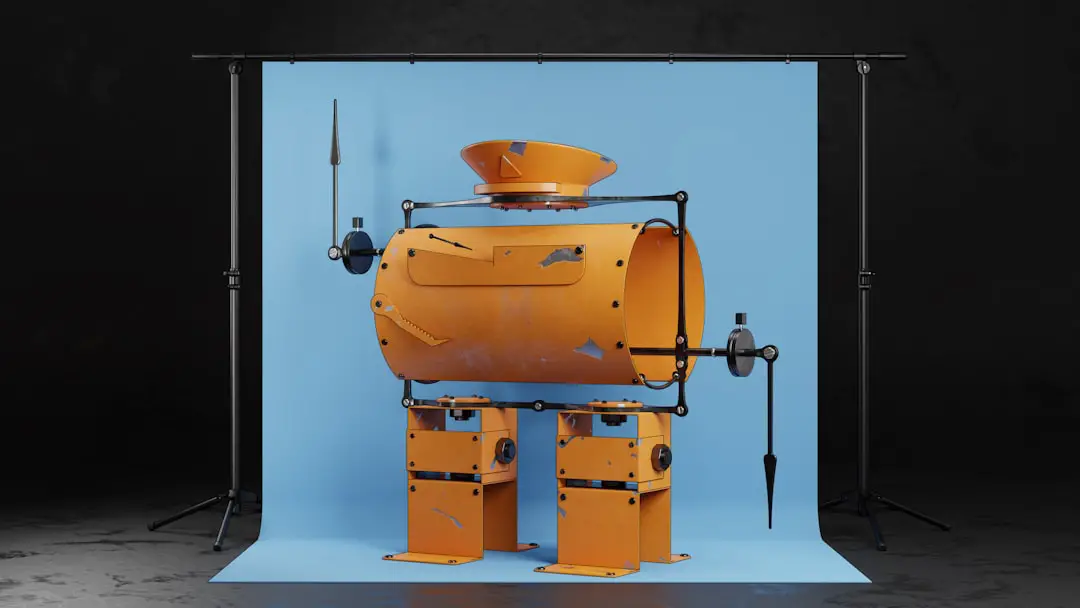
So, what makes robot movies such an enduring and fascinating genre? As we’ve journeyed through the history, iconic characters, and technological wizardry behind these films, one thing is clear: robot movies are much more than just shiny metal and blinking lights. They are mirrors reflecting our hopes, fears, and dreams about technology and ourselves.
From the silent, haunting Maschinenmensch of Metropolis to the emotionally complex David in A.I. Artificial Intelligence, these stories challenge us to ask: What does it mean to be human? They explore the consequences of our creations gaining autonomy, the ethics of artificial consciousness, and the yearning for connection—whether with a robot friend or a machine that can love.
For robotics engineers like us at Robot Instructions™, these films are both inspiration and cautionary tales. They fuel our creativity while reminding us to tread carefully as we build the future. The blend of practical effects, CGI, and storytelling artistry continues to evolve, pushing the boundaries of what robots can be on screen—and in real life.
If you’re inspired to build your own robot or just want to dive deeper into the world of robotics and AI, remember: every great invention starts with curiosity and imagination. And if you ever feel overwhelmed, just think of Baymax’s gentle reminder: “I am here to help.”
Ready to explore more? Check out our recommended shopping links and FAQs below to keep your robotic adventure rolling!
🌐 Recommended Links for Robot Movie Fans
Here’s a curated list of products, kits, and books to fuel your passion for robots—whether cinematic or real!
Robot Movie Classics & Collectibles
- Metropolis (1927) Blu-ray & DVD: Amazon | Walmart
- The Day the Earth Stood Still (1951): Amazon | Walmart
- Blade Runner: The Final Cut: Amazon | Walmart
- The Terminator (1984): Amazon | Walmart
- RoboCop (1987): Amazon | Walmart
- WALL-E (2008): Amazon | Walmart
- Big Hero 6 (2014): Amazon | Walmart
- M3GAN (2023): Amazon | Walmart
- The Creator (2023): Amazon | Walmart
Robotics Kits for Beginners & Enthusiasts
- ELEGOO UNO R3 Smart Robot Car Kit: Amazon
- LEGO SPIKE Prime Robotics Set: Amazon | LEGO Education Official
- Freenove Big Hexapod Robot Kit: Amazon
Books to Deepen Your Robot Knowledge
- Robotics: Modelling, Planning and Control by Bruno Siciliano & Lorenzo Sciavicco — Amazon
- Artificial Intelligence: A Modern Approach by Stuart Russell & Peter Norvig — Amazon
- The Singularity Is Near by Ray Kurzweil — Amazon
- How to Build a Robot by David Cook — Amazon
❓ Frequently Asked Questions About Robot Movies
What are the best robot movies of all time?
The best robot movies combine compelling storytelling with memorable robot characters that explore themes of humanity, technology, and ethics. Classics like Metropolis (1927), Blade Runner (1982), The Terminator (1984), RoboCop (1987), and WALL-E (2008) are often cited as the pinnacle of the genre. Modern entries like Ex Machina (2014) and M3GAN (2023) continue to push boundaries by exploring AI consciousness and societal impacts. Our comprehensive list above highlights 25 must-watch films that have defined and redefined robot cinema.
Are there any robot movies based on true stories?
While most robot movies are firmly in the realm of science fiction, some draw inspiration from real technological advances and ethical debates. For example, Ex Machina reflects current discussions about AI ethics and consciousness. Documentaries like Machine (2019) explore real robotics development. However, no mainstream robot movie is a direct retelling of a true story, as the technology depicted often surpasses current capabilities. That said, many films incorporate real robotics principles and emerging AI concepts, grounding their fiction in reality.
What is the most popular robot character in movies?
Popularity can be subjective, but R2-D2 and C-3PO from Star Wars are arguably the most beloved and enduring robot characters. Their personalities, humor, and heroism have endeared them to generations. Other iconic characters include HAL 9000 (2001: A Space Odyssey), the T-800 (The Terminator), and WALL-E (WALL-E). Each represents different facets of robot storytelling—from the loyal companion to the existential threat to the lovable underdog.
Can robots really become self-aware like in robot movies?
Currently, robots and AI systems do not possess true self-awareness or consciousness. While AI can perform complex tasks, learn patterns, and even mimic human conversation (like GPT models), genuine self-awareness involves subjective experience and emotions, which remain beyond current technology. Researchers continue to explore these frontiers in Artificial Intelligence, but the sentient androids of cinema remain speculative. Robot movies often dramatize these possibilities to explore philosophical questions rather than predict near-future realities.
What are some classic robot movies from the 80s and 90s?
The 1980s and 90s were a golden era for robot movies, blending practical effects with emerging CGI. Notable titles include:
- Blade Runner (1982) — Philosophical sci-fi about replicants.
- The Terminator (1984) — The ultimate killer cyborg.
- RoboCop (1987) — Man-machine law enforcement.
- The Iron Giant (1999) — Heartwarming animated robot tale.
- Ghost in the Shell (1995) — Cyberpunk anime exploring identity.
These films set the tone for many modern robot narratives and remain influential in both cinema and robotics culture.
Are robot movies a reflection of our societal fears about technology?
Absolutely. Robot movies often serve as allegories for societal anxieties about automation, loss of control, and ethical dilemmas posed by AI. The “Frankenstein complex,” as Isaac Asimov called it, is a recurring theme—fear that our creations will turn against us. Films like The Terminator, Ex Machina, and I, Robot explore these fears. Conversely, some movies highlight the hopeful side of technology, showing robots as companions or saviors, reflecting our aspirations for progress and connection.
What are some upcoming robot movies that have been announced?
Exciting projects on the horizon include:
- Transformers One — An animated origin story of the Autobots and Decepticons.
- Rumored new Terminator installments focusing on AI themes.
- M3GAN 2.0 — A sequel to the hit AI horror-comedy.
These films promise to continue exploring the evolving relationship between humans and robots, blending spectacle with deeper philosophical questions.
How do robot movies influence the development of real-life robotics?
Robot movies inspire engineers, designers, and scientists by visualizing possibilities and sparking imagination. Concepts like humanoid robots, AI companions, and autonomous machines often start as science fiction before becoming research goals. For example, the soft robotics design of Baymax in Big Hero 6 parallels real-world advances in compliant materials. Movies also raise public awareness and ethical discussions about robotics, influencing funding, policy, and societal acceptance. At Robot Instructions™, we see firsthand how cinematic robots fuel curiosity and innovation in the robotics community.
📚 Reference Links and Further Reading
- Vulture: 15 Best Robot Movies of All Time
- Wikipedia: I, Robot (Film)
- Stan Winston Studio — Masters of practical effects and animatronics
- Industrial Light & Magic (ILM) — Pioneers of visual effects and CGI
- Audi RSQ Concept Car — The real car from I, Robot
- Robot Instructions™: What Is the Robot Movie Like ET? 9 Heartwarming Films to Watch 🤖✨
- Robot Instructions™: Artificial Intelligence Category
- Robot Instructions™: Machine Learning Category
- Robot Instructions™: Robotic Applications in Entertainment
- Facebook Group Post: Top 100 Best Robot Movies: Watch Trailer
- Autodailyz TV: Robot Movies Trailer
Thanks for joining us on this electrifying journey through robot movies! Whether you’re here for the cinematic thrills or the engineering inspiration, we hope you found something to spark your imagination. Keep dreaming, keep building, and as always—stay curious! 🤖✨
